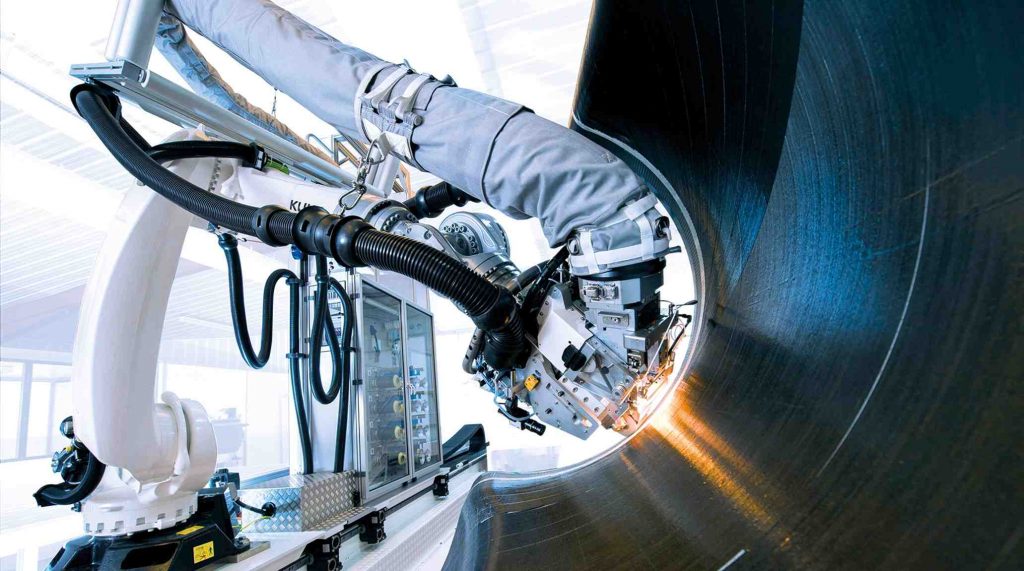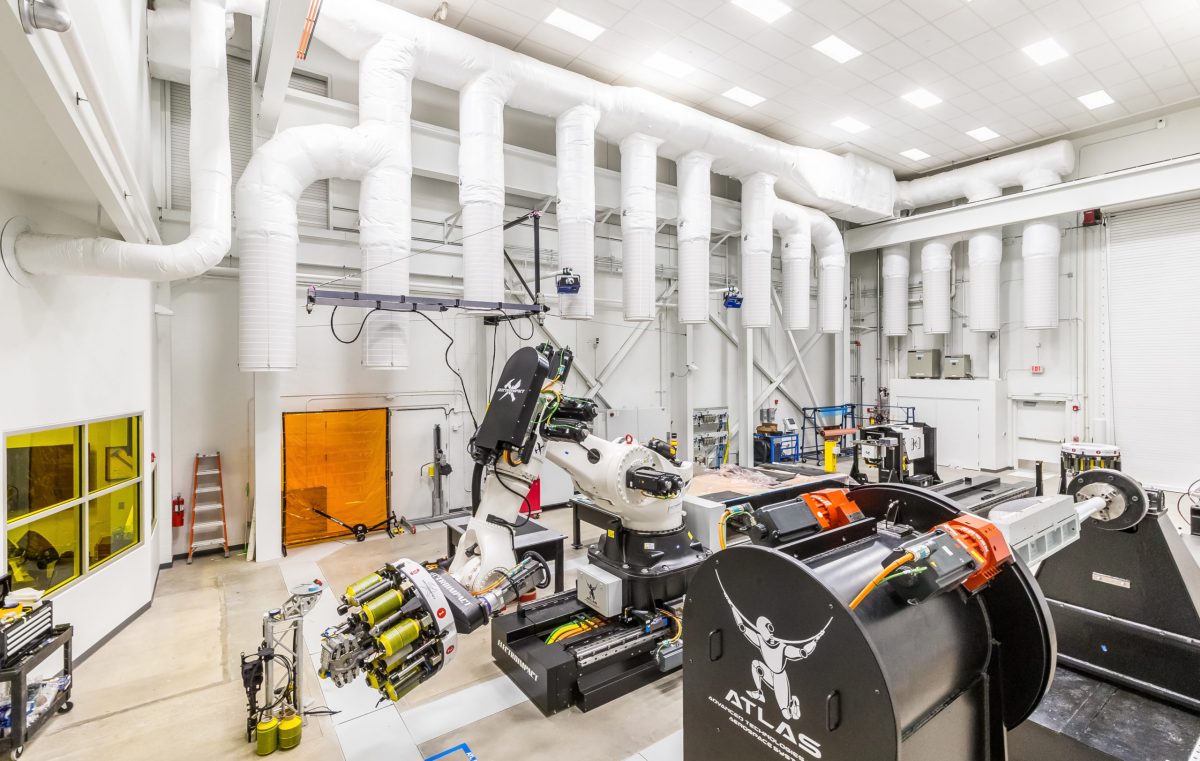

Cranking Up the Speed
Aircraft manufacturers are going to be very busy over the next two decades, and the thermoplastic composites industry is positioning itself to take full advantage of the opportunity.
By 2039, there will be 48,400 commercial aircraft flying throughout the world – 22,500 more than there were in 2019, according to Boeing’s Commercial Market Outlook for 2020-2039. At the same time, airline companies are accelerating the replacement cycle for their older aircraft to improve the efficiency and sustainability of their fleets. Thermoplastic composites can help aerospace manufacturers meet that burgeoning demand.
Thermoplastics offer many advantages for this industry. Lightweight carbon fiber-reinforced thermoplastic (CFRTP) parts provide excellent strength and stiffness; corrosion, chemical and fatigue resistance; and durability. They often perform better than equivalent metal parts.
They’re also a sustainable material. Thermoplastic parts weigh less than corresponding metal parts, enabling airlines to reduce their fuel and carbon emissions. In addition, thermoplastic composites are recyclable, so manufacturers can melt down and reuse the materials from production scrap and end-of-life parts.
One drawback to more widespread adoption of thermoplastic aircraft parts has been production speed. Until the past decade or so, the layout, consolidation and parts formation processes used for thermoplastics were similar to those used for thermosets. That included autoclave processing, which can take hours.
Developments in both materials and manufacturing have opened avenues to faster production. Using automated equipment and out-of-autoclave processing, manufacturers are demonstrating that they can turn out higher quality thermoplastic parts at faster speeds, making them a cost-effective option for aircraft production.
Designers are also getting more comfortable with thermoplastics. In Europe especially, predictive modeling and software has increased engineers’ confidence in the material. “Once the engineering teams at OEMs and Tier 1s understand how to design and implement the material, and have confidence in the manufacturing processes, you’re able to really overcome that mental wall that says, ‘This is new. I don’t know how to design and implement thermoplastics in production programs,’” says Evan Young, head of engineering R&D at Qarbon Aerospace.
Material Advances
Upgrades in unidirectional tape (UDT) are one example of how the materials used in thermoplastics manufacturing have changed. “The quality of the material has improved in terms of consistency of fiber, polymer distribution and elimination of voids within the prepreg,” says David Leach, business development director at ATC Manufacturing. Material consistency is essential to rapid, large-scale production and automation.
There have been advances in fiber reinforcement as well. Aerospace designers have primarily used continuous fiber thermoplastics to achieve the strength and performance predictability required for aircraft parts. But continuous fiber materials have some drawbacks when it comes to fabricating complex parts. “You are generally forming these parts very quickly, and getting the fibers and plies to move around in an extremely short time – often a matter of seconds – is a challenge,” says Leach. “If you have a discontinuous form, you can actually make much more complex parts, because you’re allowing some movement to occur in the fiber direction.” But parts designers have had concerns about the performance of discontinuous fiber materials.
Now there’s another option. In conjunction with NASA, the University of Delaware’s Center for Composite Materials recently developed a form of discontinuous fiber material that has properties equivalent to continuous fiber thermoplastics. Using TuFF (tailored universal feedback for forming) materials, manufacturers could produce aerospace-quality parts at the same production rate as automotive parts, according to the center. (TuFF received an Excellence in Composites “Infinite Possibility for Growth” award at CAMX 2019.)
New resins are speeding up processing as well. Thermoplastic composite manufacturers have been incorporating resins in the polyaryletherketone (PAEK) family into their products since the 1980s. These high-performance polymers are challenging to work with, however, because of more demanding processing conditions, such as high temperature. A few years ago, Victrex introduced low melt PAEK (LMPAEK™) to speed things up.
“LMPAEK was developed to find the balance of these high-performance polymer composite materials with the processability and suitability for automated production systems. These materials require less overall energy to lay up, which can contribute to significantly faster processing speeds,” says James Myers, head of research and development for aerospace and composite applications at Victrex.
Low melt PAEK has similar properties for mechanical strength, chemical resistance and other characteristics as polymers in the PAEK family, but its melting point is about 40 degrees Celsius lower. Although that may not seem significant, it makes a huge difference in manufacturing processes like stamp forming, injection molding and automated fiber placement (AFP), says Gilles Larroque, Victrex’s global strategic marketing manager.
Victrex recently worked with aerospace tooling and automation manufacturer Electroimpact on a LMPAEK demonstrator project. “Using LMPAEK with an automated fiber placement process, we’ve been able to reach 100 meters per minute in lay-up speeds. That’s close to four times faster than a similar PAEK UDT,” says Larroque.
In October 2020, Victrex and French aircraft manufacturer and equipment supplier Daher announced that they had produced a 176-ply, 1.2-inch-thick thermoplastic structural aircraft panel using AFP and LMPAEK UDT. This thickness has not been obtainable previously, according to Victrex. The company says the 47 x 23-inch panel meets aerospace industry standards for porosity, crystallinity, consolidation and ply bonding.
"What we see here is our unique UDT properties contributing to the fast AFP process, developed and demonstrated by partners Coriolis Composites and Electroimpact. These manufacturing rates enable all the exciting possibilities of metal replacement with thermoplastic composites on a far-reaching scale in aircraft design," commented Tim Herr, director of Aerospace at Victrex, in a company press release.
Larroque says the parts made with AFP and LMPAEK could be used for large primary structures. The material would also be appropriate for secondary structural parts like brackets and system attachments, which carry high loads.
Both the LMPAEK resin and the parts made from them must go through the aircraft industry certification process before they can be used for large-scale production.
Reduced Manufacturing Time
Thermoplastic composite companies are using new equipment to reduce the time and steps in production. Continuous compression molding (CCM), for example, enables manufacturers to make a large quantity of laminates very cost effectively. Traditional presses have limitations on the size of the parts produced. “The required pressure, temperature, size and cost of equipment go up exponentially as you go to larger and larger laminates,” says Leach.
One alternative for large-scale parts is vacuum-only processing. “AFP processes are getting to a pretty high level of consolidation, where you may just need a final, vacuum-only process to fully consolidate the part,” says Leach. “You may not even need that; you may be able to fully in-situ consolidate the part.”
To achieve the necessary cost reductions and speed for production of larger parts and variable thickness parts, manufacturers will need to move to automated layup; it’s just not practical to lay up and pack the plies by hand, says Leach. Some companies are using pick-and-place robotic systems, which can lay the fabric forms (dry or prepreg) and increase or decrease the number of plies in certain areas. This enables manufacturers to more easily tailor parts for weight, stiffness and strength.
Injection overmolding is being used to consolidate aircraft components, adding stiffener or attachments to a part. “If you’re going to use continuous fibers, you’re limited in geometry, whereas injection molding can give you much more complex geometry,” says Leach. At high volumes, this can be a very cost-effective way of creating complex shapes.
Although thermoplastics manufacturing is moving toward more automated production, there’s still a need for humans in the production process, Leach says. He expects to see an increase in cobots (collaborative robots) that are small enough and safe enough to work alongside people on the manufacturing floor. The cobots can handle the dangerous, repetitive parts of the job, such as transferring a hot blank to a stamp forming machine. That frees up people to take on jobs that require judgment, like parts inspection.
Induction Welding
Thermoplastic materials can be melted and reformed, which allows for parts to be welded together to create larger, more complex components. Welding reduces the need for fasteners, which saves production time, reduces the weight of parts and eliminates the need to put holes in laminates.
“Any composites designer or stress engineer out there will tell you that a primary limiting factor of composites is the fastener,” says Young.
Induction welding of CFRTP is attracting a lot of attention in the industry. The process uses a robot equipped with an induction coil, which creates a magnetic field that interacts with the electrical and magnetic properties of carbon fiber to induce heating. The weld is formed when two carbon fiber laminates are brought into contact and a robot moves the induction coil just above the areas where the heat is needed.
Over the last three years, a project team at Qarbon (formerly Triumph Aerospace Structures) has been working to refine this process. Since the electrical properties of various carbon fiber materials vary, they react differently to the induction welding process. So, the Qarbon team has patented a way to focus weld energy without a susceptor and developed sophisticated methods to design the induction coil for specific materials and processes. (Susceptor material, usually metallic, is sometimes included at the joint of the composite part to induce heating, but potentially lowers joint strength.) Qarbon’s technology will enable OEMs to create a part using the material that best suits their needs; the manufacturer can then create the induction welding coil optimized for that material and that part, according to Young.
There’s no diminution in the composite part strength with welding. During a test program with an aircraft OEM, the Qarbon team demonstrated that the joint strength of an induction weld exceeds that of an equivalent fastener and other joining technologies.
In developing the induction welding technology, the project team has produced both a flat demo box, which resembles a horizontal aircraft tail, and a curved box, which is the shape of many aerospace structures.
“We are ready to take this technology to an OEM’s production program, whether it be urban air mobility, commercial aviation or military customers,” says Young. “We want to take their specific designs and start implementing our intellectual property [i.e., software] so that we can understand how to best manufacture for their optimized airframe design.”
Young says that several OEMS have expressed interest in induction-welded parts, and he expects that they will be flying on demonstrator planes within the next two to three years.
Urban Air Mobility
It’s not only traditional aircraft manufacturers who are interested in thermoplastic composite parts. Companies that are producing Electric Vertical Takeoff and Landing vehicles (eVTOLs) also understand their benefits. These urban air mobility vehicles, which will be used to transport people and packages within a range of about 60 miles, need the advantages that thermoplastic parts provide.
“Urban air mobility is going to have even more critical weight requirements than standard aircraft or even rotorcraft. They’re trying to be a repeat use air vehicle, and their operational tempo is fairly high,” says Young. eVTOLs will be powered by batteries, so weight reduction is critical if the aircraft are going to achieve the desired range.
eVTOL producers need production speed as well. “Some of these eVTOL companies are saying that they want to build 4,000 units a year later this decade. You could never get a thermoset autoclave process to hit 4,000 units a year; the required infrastructure would make the economics of an air taxi unpalatable compared to thermoplastic material systems,” says Young.
Thermoplastic composites can solve both problems. “The manufacturing gets faster because we’re doing it with a robotic dynamic assembly versus drill-and-fill operations with fasteners,” he says. Manufacturers will enjoy the double value of both weight and cost savings.
Young notes that acceptance by the eVTOL sector could speed the traditional aerospace industry’s adoption of thermoplastic parts as well. Most OEMs tend to be risk adverse and will be more accepting of thermoplastic technology once it has been proven. Conversely, Young asserts that eVTOL OEMs seem to be focused on speed to market and willing to incorporate a certain level of risk.
“I think the broader industry is going to start accepting that structural thermoplastics is something for the future and not just far-off science,” says Young. “We are really able to marry the design and the manufacturing processes to leverage the benefits and get to where we need to be for cost and weight opportunities in the aerospace industry.”
Mary Lou Jay is a freelance writer based in Timonium, Md. Email comments to mljay@comcast.net.

SUBSCRIBE TO CM MAGAZINE
Composites Manufacturing Magazine is the official publication of the American Composites Manufacturers Association. Subscribe to get a free annual subscription to Composites Manufacturing Magazine and receive composites industry insights you can’t get anywhere else.





